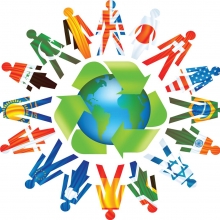Most Black Kids Can’t Swim. It’s Not Just A Stereotype — It’s History
Diversity 🌈
Published on Feb 5, 2022
In 2014, the CDC found that an 11-year-old black child is 10 times more likely to drown than a white child the same age. The idea that "Black people can't swim” may sound like a stereotype, but this disparity is rooted in a history of discriminatory access to swimming pools.
This summer has produced three high-profile incidents of white Americans calling – or threatening to call - the police on Black pool goers.
A South Carolina woman was charged with multiple accounts of assault for accosting a 15-year-old boy and a police officer. A North Carolina man lost his job after a video of him calling the police on a woman who refused to show him her identification. A property manager at a Memphis apartment complex also lost her job for calling the police on a man for wearing socks in the pool.
These episodes are just the most recent in a long history of discriminatory access at American swimming pools, going back almost 100 years. VICE News spoke with Jeff Wiltse, a professor of History at the University of Montana, and the author of “Contested Waters: A Social History of Swimming Pools in America.”
“It was socially normal for blacks and whites to swim together at these public pools during the late 19th and early 20th century but that all changed during the 1920s and 1930s when cities opened up large resort like pools,” says Wiltse. “That permitted males and females to use them together.”
Wiltse said that it was at that point that white swimmers and public officials imposed racial segregation because most whites did not want to allow black men to interact with white women at such intimate public spaces.
Pools were desegregated after World War II — frequently by court order — but like America's public schools, integration in the water was more of a legal concept than a cultural one.
Racial desegregation of public pools rarely lead to meaningful sort of interracial use, said Wiltse. “In general, whites abandoned public pools that black swimmers started to use.”
“Swimming became broadly popular within white communities and was passed down from generation to generation. Because of African-Americans more restricted access, swimming did not become a broadly popular activity among Black families.”
In 2017, USA Swimming, the governing body for the sport of swimming in the US, has found that African-American children and their parents are three times more fearful of drowning than Caucasian children and parents. Additionally, 64% of African American children have low or no swimming ability.
Dezria Holmes knows how to swim, but wouldn’t call herself a strong swimmer. She’s trying to change that for her children, 12-year old Madison and 7-year old Mason. Both are enrolled in a Chicago swimming program launched by USA Swimming, Chicago Park District, and Illinois Swimming to get a more diverse group of young people in the water.
“My grandparents couldn't swim because of segregation,” said Holmes. “So when I saw the opportunity for my daughter to swim, and then my parents were able to see their granddaughter swim. They were actually crying, because no one in our family swims like Madison. So to be afforded this opportunity has just been amazing.”
USA Swimming has found that Black children and their parents are three times more fearful of drowning than white children and their parents. Safety was the main reason Holmes wanted her kids to learn how to swim.
Subscribe to VICE News here: http://bit.ly/Subscribe-to-VICE-News
Check out VICE News for more: http://vicenews.com
Follow VICE News here:
Facebook: https://www.facebook.com/vicenews
Twitter: https://twitter.com/vicenews
Tumblr: http://vicenews.tumblr.com/
Instagram: http://instagram.com/vicenews
More videos from the VICE network: https://www.fb.com/vicevideo










